Why Do Cookies Burn on the Bottom? (Causes & Expert Fixe)
Have you ever opened the oven, excited to pull out your cookies—only to find them burnt on the bottom? If you’re wondering, why do cookies burn on the bottom, you’re definitely not alone. I’ve faced this problem many times throughout my 17 years of experience in the baking industry, and it’s just one of those cookie baking mistake for both beginners and professionals.
The main reasons behind burnt cookie bottoms usually come down to incorrect oven temperature, baking tray material, dough piece thickness, or how and where the tray is placed inside the oven. Even a small mistake in any of these steps can lead to cookies that are golden on top—but too dark underneath.
In this blog post, we’ll explore all the possible causes and share practical baking fixes you can try at home. I’ll also include tips we follow in the baking industry to make sure every cookie comes out perfectly baked from top to bottom.
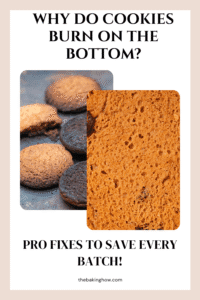
🧾 H2: Why Do Cookies Burn on the Bottom? (Main Causes)
Wondering why do cookies burn on the bottom? Here are the most common reasons that cause cookies to overbrown or burn from underneath—even when they look perfect on top.
🔹 1. Ingredient Ratios
Getting the right recipe balance isn’t just important for taste and texture—it directly impacts the cookie color and bottom browning. These issues often arise from basic cookie ingredients like sugar, butter, or milk powder being off-ratio.
When cookies are exposed to oven heat, sugar undergoes caramelization, turning the surface golden-brown. Other ingredients like milk powder (containing lactose), invert syrup, eggs, and milk also promote browning through Maillard reactions and sugar caramelization.
However, if you use too much sugar or excess liquid ingredients, the dough can spread too much. This causes the cookie to become thin, leading to quicker bottom burning due to direct contact with the hot baking tray.
✅ Tip from industry:
In professional baking, we always balance recipe ingredients to maintain not only texture and spread but also even browning without overbaking the bottoms.
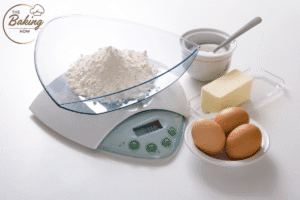
🔹 2. Dough Piece Shaping
After balancing the ingredients, the next key factor in avoiding burnt cookie bottoms is how you shape your dough pieces.
If the cookie pieces are uneven in weight or thickness, they won’t bake uniformly. A too-thin cookie will expose its bottom directly to heat, causing it to brown or burn quickly. On the other hand, too-thick pieces may bake from the edges while the center remains underbaked, resulting in cookies that are crispy outside and soggy inside.
✅ Pro Tip:
Always aim for uniform dough shaping using a cookie scoop or cutter. In the baking industry, we use precise portioning tools to ensure each dough piece is the same weight and thickness, ensuring even baking and perfect color development.
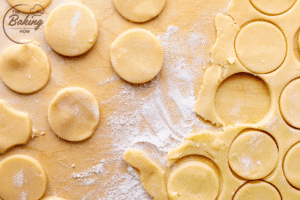
🔹 3. Incorrect Oven Temperature
One of the most critical reasons why cookies burn on the bottom is incorrect oven temperature. Whether you’re baking at home or commercially, getting the baking time and temperature right is essential for achieving the ideal cookie texture and color.
If the oven is too hot, the cookies will start setting too quickly, and their bottoms may burn before the centers are done. Additionally, if the bottom heat is higher than the top, the bottom surface of the cookie will brown too fast—leading to burnt results even if the top looks fine.
✅ Industry Insight:
We always follow standard baking profiles that define exact temperature ranges and timings for each cookie type. Preheating the oven and ensuring balanced top and bottom heat are essential steps we never skip in professional production lines.
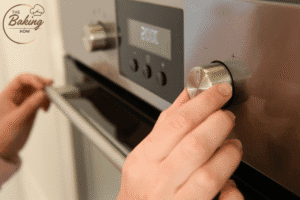
🔹 4. Baking Tray Material
The baking tray you use has a direct impact on whether cookies burn on the bottom. If your tray is too thin, it conducts heat too quickly—causing the bottom of the cookies to overbake or burn, even if the tops look perfect.
Using a low-quality or sticky tray can also cause the dough to stick, resulting in darker bottoms or even uneven texture.
✅ Industry Experience:
In commercial baking, we avoid baking trays altogether. We use stainless steel bands in continuous tunnel ovens, which provide even heat distribution and smooth cookie release—helping us avoid burnt bottoms altogether.
🏠 Home Tip:
At home, use heavy-duty aluminum or insulated baking trays. Avoid dark-colored trays unless the recipe calls for them, as they absorb and intensify heat more than lighter ones.
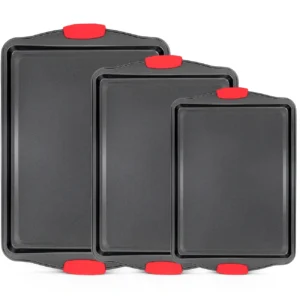
🔹 5. Placement of Baking Tray in Oven
Even if your recipe and oven settings are perfect, incorrect tray placement can still cause cookies to burn on the bottom.
If you place your cookie tray too close to the bottom heating element, or directly on the oven’s bottom metal sheet, the intense bottom heat will quickly transfer to the dough—burning the bottoms before the tops even begin to bake.
It’s also important to remember that heat rises from the bottom, so baking on the lowest rack increases the risk of over-browned or burned cookie bases.
✅ Expert Insight:
In the industry, we carefully manage this by keeping the bottom heat slightly lower than the top. This ensures that cookies develop an even golden color on both sides without overbaking the base.
🏠 Home Tip:
Always bake cookies on the middle oven rack for balanced heat exposure. Avoid placing trays near the bottom unless your recipe specifically calls for it.
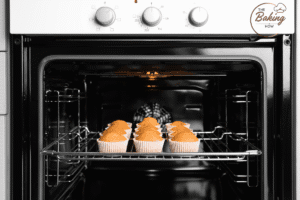
🛠️ H2: How to Prevent Cookies from Burning on the Bottom (Fixes)
After knowing the common reasons for why do cookies burn on the bottom, we will find the solutions and fixes to get the perfect color from top and bottom in every baking session.
🛠️ Fix #1: Balanced Ingredients Ratio
Once you understand the cause, the next step is to fix it—and it starts with your cookie dough recipe.
If your cookies are turning brown too early, it’s often due to an excess of sugar or color-contributing ingredients like milk powder, glucose powder, or invert syrup. These ingredients caramelize quickly, which gives cookies color—but too much of them can lead to burnt bottoms before the cookie is fully baked.
🔧 Home Fix:
If you’re experiencing this, try reducing sugar by 5%, and avoid using all color agents at once. Choose either milk powder, or invert syrup, or glucose powder—not all three together.
✅ Industry Tip:
We use glucose powder (dextrose monohydrate) or invert syrup for shine and color—but if the recipe includes milk powder for flavor or texture, we reduce the other color-contributing ingredients. This keeps cookies evenly browned without burning.
🛠️ Fix #2: Tray Selection & Preparation
Even with the right recipe, poor tray selection and preparation can still be the reason why cookies burn on the bottom.
After shaping your cookie dough properly, pay attention to the tray material and how cookies are placed on it. As we discussed earlier, uneven or overly thin dough pieces bake faster from the bottom, which can lead to burnt bases.
🔧 Home Fix:
- Make dough pieces equal in weight and thickness—use a kitchen scale set to grams for accuracy.
- Shape dough pieces evenly from center to edges to ensure even baking.
- Always use a thick, non-stick metal baking tray as we explained in our post about baking tools for cookies.
- Place a parchment/baking paper on the tray to prevent sticking.
- If baking paper isn’t available, lightly grease the tray with oil instead.
✅ Industry Tip:
In commercial baking, we ensure every cookie has precise weight and shape before baking. Our forming machines measure average line weight consistently. We bake on a continuous stainless steel band, which is slightly oiled to prevent sticking—helping us maintain color uniformity and prevent burning.
🛠️ Fix #3: Oven Settings & Tray Placement
When it comes to preventing cookies from burning on the bottom, nothing is more crucial than the right oven temperature and tray placement.
🍪 Home Bakers Tip:
Set a standard oven temperature based on your recipe—not too high, not too low. If your oven allows, reduce the bottom heat by 20–30°C compared to the top to avoid direct burning from underneath.
Always preheat your oven about 20 degrees higher than the standard baking temperature (which is usually between 175°C and 190°C) for best results. This helps stabilize the oven heat before baking begins and ensures a consistent environment.
Place your baking tray on the middle rack—not too low and not too close to the top. This allows for even air circulation and balanced heat distribution around your cookies.
Also, be mindful of spacing the dough pieces on the tray. If your cookie dough pieces are around 50 mm in diameter, leave about 25 mm of space between them to prevent spreading and uneven browning.
If your oven doesn’t have an accurate reading, consider using an oven thermometer to monitor the heat precisely.
🏭 Industry Insight:
In professional baking, we always preheat ovens and follow a finalized baking temperature and time standard for each recipe. We ensure the oven steel band speed and forming machines are adjusted to maintain proper spacing, and we control top and bottom heat to bake cookies evenly without burning from the bottom.
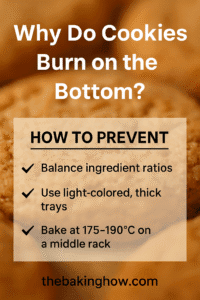
🧁 Final Thoughts
If you’ve ever wondered “why do cookies burn on the bottom?”, now you have the complete answer. It’s not just one issue—it can be a mix of ingredient imbalance, oven settings, tray material, and how you place your dough. Each small mistake adds up and affects your final cookie texture and color.
In my 17 years of experience in the baking industry, I’ve seen entire batches wasted due to these common yet avoidable errors. But with a little attention to detail—balanced recipes, proper baking trays, preheating the oven, and placing the tray correctly—you can bake cookies that are golden brown, soft in the middle, and evenly textured from top to bottom.
Whether you’re a home baker or working on scaling your baking skills, these simple tweaks can truly level up your cookies.
You can also explore helpful advice from professional sources like King Arthur Baking for more prevention tips.
Happy baking! 🍪

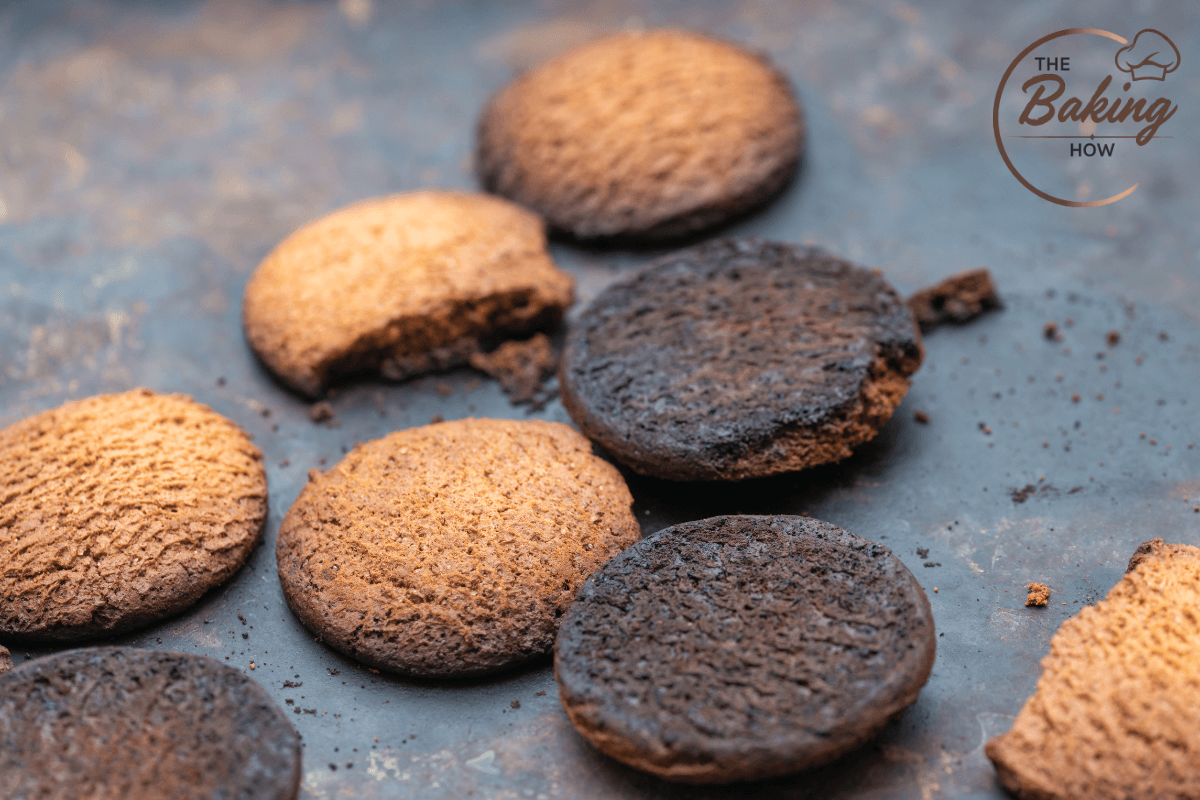
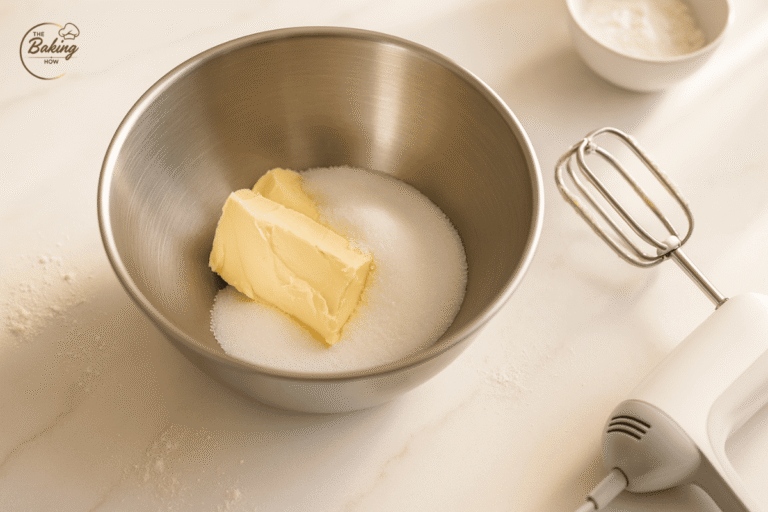
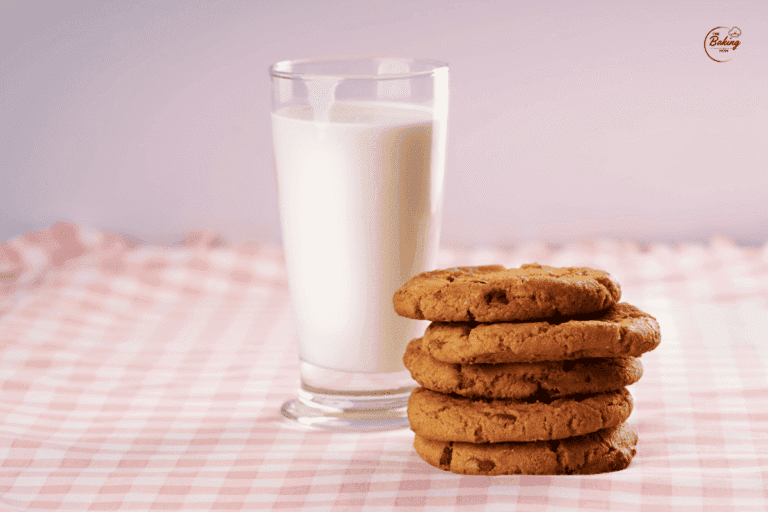

very nice publish, i definitely love this web site, keep on it